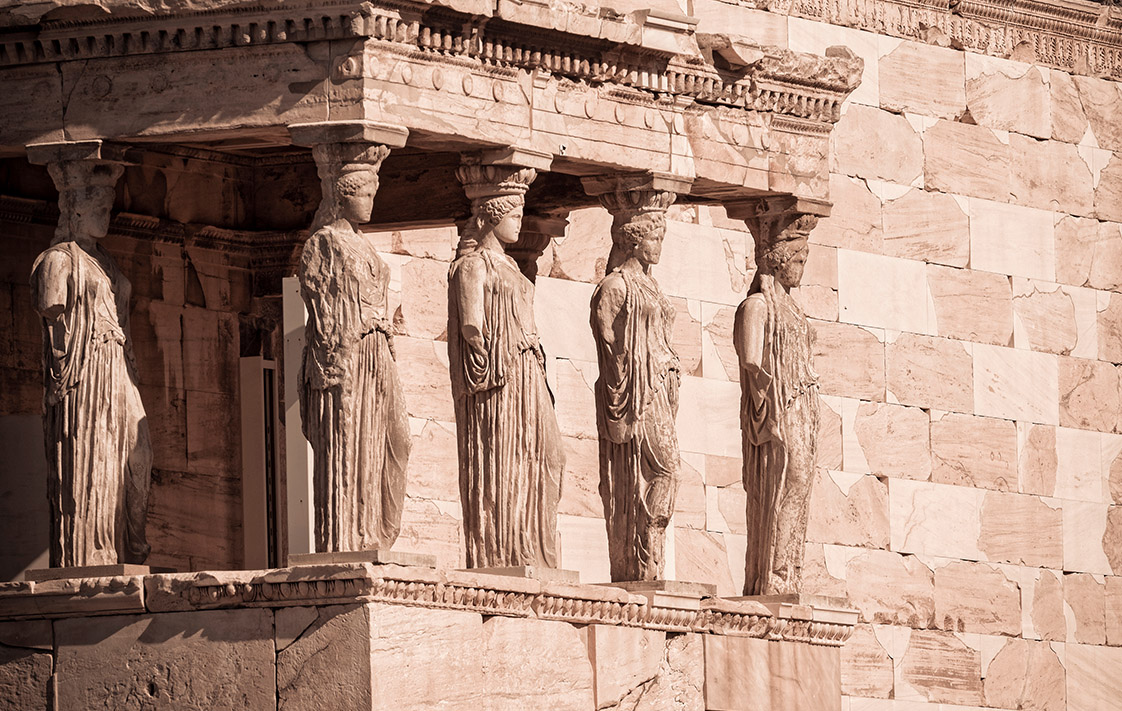Erechtheion and Caryatids - The Sacred Elegance of the Acropolis
Discover the Erechtheion on the Acropolis of Athens — a temple of myth, asymmetry, and divine grace guarded by the eternal Caryatids.

The Erechtheion defies every rule of Greek architecture.
Where the Parthenon is symmetry and order, the Erechtheion is mystery and myth — a sacred house built to contain contradictions.
🏛️ A Temple for Many Gods
Constructed between 421 and 406 BCE, the Erechtheion honored Athena Polias, Poseidon, and King Erechtheus, the legendary ancestor of Athens.
It stood upon the holiest ground of the Acropolis — the site where Athena and Poseidon once competed for the city’s devotion.
According to myth:
- Poseidon struck the rock with his trident, producing saltwater.
- Athena planted the first olive tree — symbol of peace and prosperity.
The Athenians chose Athena. Her tree still grows beside the temple.
⚙️ Architecture of Asymmetry
Unlike the rigid Doric Parthenon, the Erechtheion’s design responds to uneven terrain and layered sanctity:
- North porch: entrance to Poseidon’s sacred mark.
- East facade: Ionic columns facing the sunrise.
- South porch: the Porch of the Caryatids — six maidens replacing columns, draped in timeless poise.
This architectural complexity reflects the multiplicity of faith — a shrine both earthly and divine.
👩🦱 The Caryatids
Each Caryatid is both sculpture and structure — the perfect fusion of art and function. Their stance is fluid yet strong, hips swayed slightly in contrapposto, bearing the entablature like priestesses in eternal ritual.
Five originals rest today in the Acropolis Museum; the sixth, taken by Lord Elgin in 1801, resides in the British Museum — a separation that continues to echo through history.
“They carry not only marble, but memory.”
✨ The Spirit of the Erechtheion
The Erechtheion remains a paradox — asymmetrical yet balanced, fragile yet eternal.
It embodies Athens itself: a dialogue between myth and reason, chaos and clarity.
To stand before the Caryatids is to see grace turned to stone — human beauty sanctified by divine purpose.
About the Author

Art Historian
A history enthusiast and traveler, I created this site to help visitors experience the Acropolis and its ancient wonders.
Tags
Comments (0)
Loading comments...